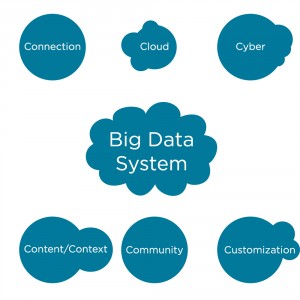I recently began a series of posts inspired by a webinar entitled Enabling Smart Factories – The Transformation of Manufacturing Systems & Factory Facilities, hosted by Advantech and presented by Dr. Jay Lee. I introduced Dr. Lee and his Center for Intelligent Maintenance Systems in Part 1 of this series. This blog covers the topic of Mega Trends and Unmet Needs.
I’ve an attorney friend who confessed in a moment of unguarded candor that, when asked whether a client should or shouldn’t take a particular course of action, his safest and therefore most likely answer was, “No, don’t do it.” After all, if he advised the client to undertake a particular action and the results were negative, my friend the lawyer might be blamed. If instead he advised the client not to take an action, and the client followed his advice, how would the client ever know whether the action would or wouldn’t have succeeded? When an attorney advises following the “abundance of caution” rule, this is likely what she or he means. Problem is, by eliminating possibly negative results, the abundance-of-caution rule also eliminates all potentially positive results.
When Dr. Lee advised a competitiveness transformation strategy of avoiding problems rather than solving them after the fact, I was immediately reminded of my attorney friend’s cynical strategy and came very near to missing the point. Dr. Lee advised nothing so passive. Instead, he offered a positive strategy for anticipating and resolving problems before they occur by leveraging IoT and Big Data strategies that bring visibility to formerly invisible conditions. The Internet of Things and Big Data have the very real potential of delivering awareness of potential problems and conditions that were previously invisible to the designers, managers and operators of manufacturing lines.
Dr. Lee offers the recent consumer example of fitness bands that monitor not only activity during waking hours, but also sleep patterns, with the goal of enabling the wearer to leverage feedback into better sleep quality as well as more efficient exercise. Such wearable devices allow users to gather and evaluate data that was simply unavailable to consumers by traditional means. Among the benefits is prevention of poor-quality sleep. Similarly, IoT and Big Data strategies allow enterprises to capture data and leverage resulting knowledge that were previous invisible to them. What you can predict, you can actively avoid or embrace, as required for optimum line efficiency.
Where does this predictive knowledge come from? How is it gathered, process and delivered? Dr. Lee introduces the six-Cs of Big Data systems:
- Connection: For example, RFID sensor networks.
- Cloud: The Cloud delivers on-demand data and computing.
- Cyber: Modeling applications that transform data into actionable strategies.
- Content/Context: The process of classifying and correlating data to derive essential meaning from it.
- Community: Leveraging knowledge gained by sharing it throughout relevant communities.
- Customization: Adding value to shared data by customizing it to better describe your specific applications.

The goal in manufacturing is to measure and manage overall equipment effectiveness. In Dr. Lee’s analysis, the key pieces missing from most nascent IoT and Big Data strategies are the analytics required to derive fullest meaning and greatest visibility to hidden processes. The sheer volume of available data – in terms of both velocity and variety – can easily overwhelm analysts. Analytic strategies must, therefore, also filter data into strategic hierarchies ranked by quality or veracity.
Dr. Lee describes the present state of manufacturing as the Third Industrial Revolution in which electronics and IT have automated most production systems. The Fourth Industrial Revolution into which we are moving involves what he calls “cyber-physical systems,” systems in which every physical product will have a twin in cyber space wherein analytical functions constantly evaluate the product, which leads us to Part 3 of this blog series, Driving Forces and Emerging Technologies in Big Data, Agent, Industry 4.0 and Cyber-Physical Systems.













